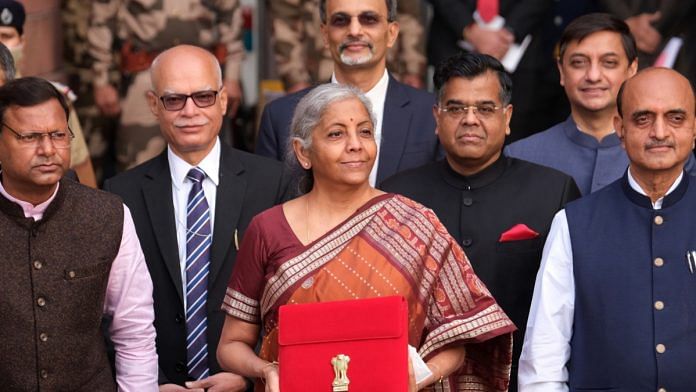This being the 75th year of India’s independence, Prime Minister Narendra Modi’s government decided to market its annual budget as a blueprint for the next quarter century. “GatiShakti,” which is Hindi for kinetic energy, is Modi’s idea for speeding up the movement of goods and people. Nothing wrong with that long-term focus on productivity, except that the success or failure of this year’s spending plan would be judged by how well it harnesses the potential energy of India’s young workforce.
When it comes to this more immediate goal of reviving jobs in the post-pandemic economy, the budget has one big idea: infrastructure. Finance Minister Nirmala Sitharaman says she will attract private investment by stepping up capital expenditure, which is forecast to jump by 25% in the fiscal year that starts on April 1 to 7.5 trillion rupees ($100 billion).
This spending, which deepens the economy’s capacity to produce new goods and services, is creditable because it comes on the back of a higher-than-expected 41% surge in the current year. Stock markets believe that this continued emphasis on creating hard assets will be pro-growth.
To bond markets, however, the budget math is not very credible. At $222 billion, the projected fiscal shortfall for 2022-23 is wider than this year’s yawning $213 billion gap. Record borrowings — even more than in the first year of the pandemic — may force the government to lean on the central bank to buy its bonds by printing new money. But with the U.S. Federal Reserve embarking on an aggressive monetary tightening campaign, extending the pandemic-era glut of easy rupee liquidity may be risky. A combination of loose fiscal and monetary policies at a time of high trade deficits and an inflationary buildup could destabilize the rupee — and scare away foreign investors from India’s asset markets.
That can’t be allowed to happen. In the absence of a pliant Reserve Bank of India, overseas investors could be a particularly crucial source of financing the budget deficit this year. But how keen will they be to buy Indian debt? Fund managers were hoping that the budget would remove capital gains taxes on their investments, paving the way for the country’s inclusion in global bond indexes. However, no such assurances came. If, as a result, India bumps up against funding constraints, the private investment that Sitharaman is hoping to catalyze by stepped-up public spending might fail to materialize.
The other plank of her strategy is to wield the stick of higher import tariffs while dangling the carrot of $27 billion in “Make in India” subsidies announced previously. The budget raised duties on a range of imported products, including headphones and solar panels. It also announced a “moderate” 7.5% duty on capital goods and project imports. Such a protectionist tilt has a long history of failure in India; there’s no reason to expect that the experience this time around will be any different.
Meanwhile, taxes on domestic activity are being kept low. With the exception of a 30% levy on income from trading cryptocurrencies, hardly any new revenue measure was announced. Even cigarette manufacturers were spared. A 15% tax on corporate profit for newly incorporated manufacturing enterprises was extended by a year — to March 2024. The risk of such a heavily supply-side-oriented strategy is that any pressure to raise revenue during the year may fall on regressive consumption taxes. Squeezing a population that has borne the brunt of job losses, especially in the informal sector, could further complicate the economy’s recovery.
The pandemic has deepened inequality by boosting the profits and incomes of a tiny section of firms and households. By taxing this windfall, the government could have kept a lid on its borrowing. That would have made its capital expenditure plan both creditable and credible. The bond market wasn’t hoping for much by way of fiscal consolidation this year, but it’s being asked to soak up far more debt than it was expecting. As things stand, there will also be pressure on the RBI: It will have to very quickly reestablish its inflation-fighting credentials so as to not lose control of macroeconomic stability.
Sitharaman’s budget is risky because her choices were limited. India’s extremely low employment-to-population ratio points to 200 million missing jobs. Young people are delaying joining the workforce while women have left it in large numbers. By the time Modi’s “kinetic energy” plan charges up the transportation sector, India may be celebrating its 100th year of independence. Today’s young workers would be middle-aged. Missing out on a generation in its prime would be a tremendous waste of potential. –Bloomberg
Also read: Why 20 crore missing jobs are the biggest challenge for FM Sitharaman in Budget 2022 math






